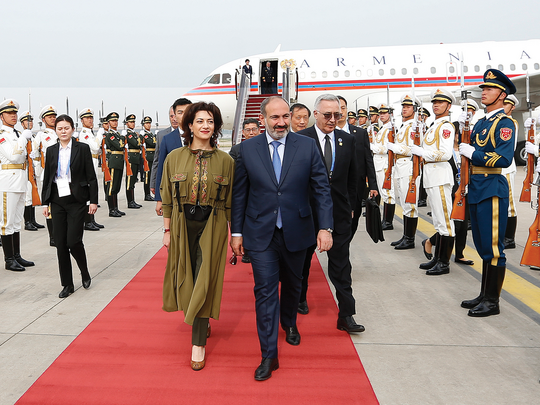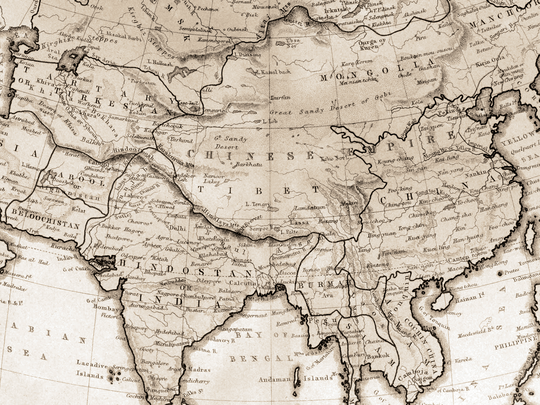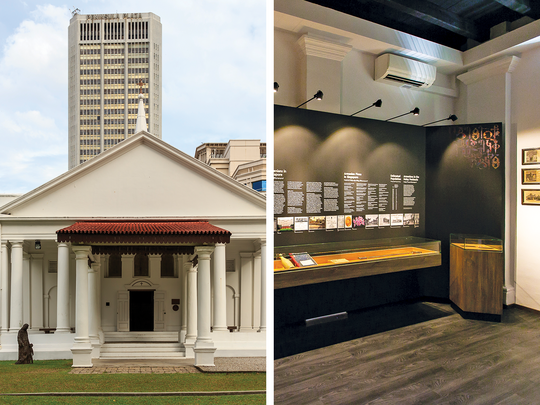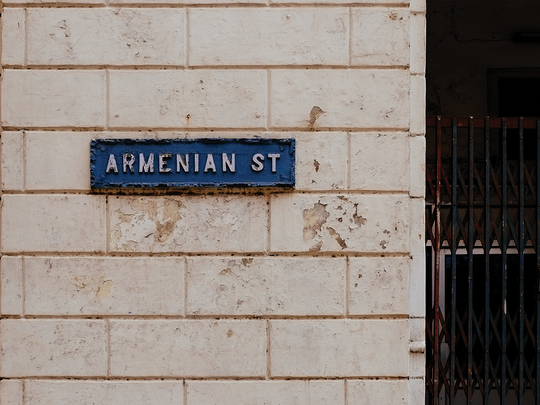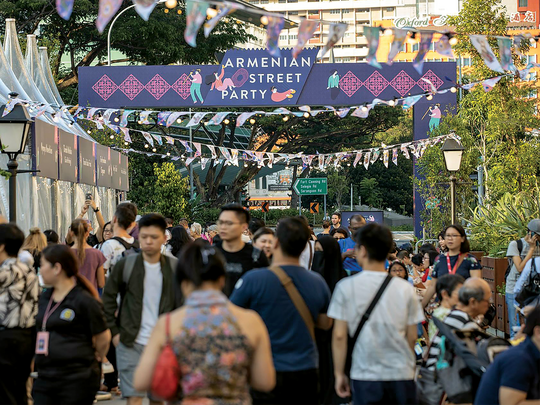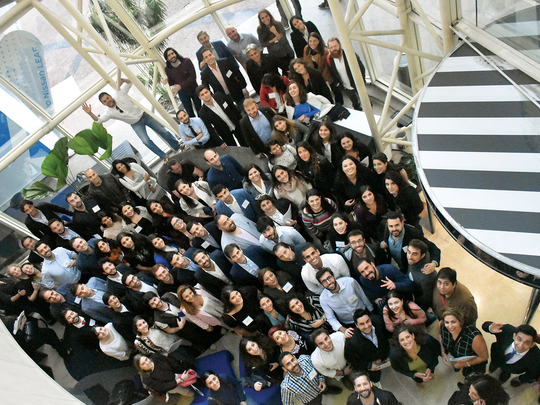On a lazy Sunday morning in Seoul’s Yeouido Hangang Park, a group of young professionals have gathered to catch up on life and discuss literature. Thousands of miles away from home, a unique lingua franca unites them: Armenian, with a few Korean words here or there.
In one of the world’s most densely populated cities, a steadily growing Armenian Diaspora is starting a new chapter in history. The members of AGBU YP Seoul, the first Armenian organization in South Korea, have made the vibrant global city their home. After Tokyo, New York, and Los Angeles, Seoul has the world’s largest metropolitan economy, with a GDP of over $630 billion—unsurprising, for the fact that it’s the global headquarters of 15 Fortune Global 500 companies. Since diplomatic relations between South Korea and Armenia were first established in 1992, Armenians have been traveling to the capital city for work and study. Approximately 70 Armenians now live in the country, some having just recently arrived and others settled for decades.
Open Doors
With a booming technology industry, Korean companies like Samsung, LG, and SK Hynix make Seoul fertile ground for a new generation of Armenia’s engineers looking for original opportunities. Ogsen Galstyan’s career is a prime example. Galstyan arrived in South Korea in 2012, invited by Sogang University as a researcher in their Microwave Photonics Lab. A graduate of the Institute of Radiophysics and Electronics in Armenia, he was hired as an engineer for SEMES, a subsidiary of Samsung and Korea’s largest semiconductor equipment manufacturing company. Author of seven research papers and six patent applications, Galstyan finished his doctorate through both universities and continues to work in research and development of plasma etchers for Samsung.

“Interestingly, it was my work in the semiconductor industry that connected me to Armenians in Seoul,” Galstyan recalls. Though the Armenian community in South Korea had been organizing since 2011, it was recognized by the Armenian Ministry of Foreign Affairs in March 2015, with an official letter issued to the Armenian Embassy in Japan, which serves both communities. In 2017, at SEMICON Korea, the largest global conference in the industry, Galstyan met Dr. Yervant Zorian.
Chief architect of Synopsys, a semiconductor technology firm headquartered in Silicon Valley that works closely with Samsung, Zorian took an interest in Galstyan’s story. “To me, his journey represented the fruitful partnership between Armenia and South Korea, and I knew Ogsen was not the only young Armenian professional in Seoul,” Zorian remembers. “During my periodic interactions, I had noticed that the Armenians of the city were linked to each other socially and to Armenia on a personal basis, but they lacked the organized Diaspora community features locally and globally. I thought introducing the worldwide AGBU YP experience would complement the excellent attributes that already existed and turn Seoul into an exemplary node in the global Armenian network.” On the AGBU Board since 2008, Zorian proposed and facilitated the launch of AGBU YP Seoul in November 2018.
“Our community is a family,” Narine Haroyan, Chair of YP Seoul, says. Responsible for uniting Armenians from all industries, those studying and those working, together, Haroyan plans events that range from ghapama-making competitions to book clubs. YP Seoul provides a safety net for Armenians in South Korea, making sure they feel supported with resources and insights. Expats who have lived in the city for longer offer advice and guidance, helping new arrivals adjust. Haroyan is at the helm of this knowledge sharing.
First coming to Seoul in 2012 through the Korean government scholarship program, she completed a three-year language intensive along with her master’s degree in international commerce. After graduation, she briefly returned to Armenia before coming back in 2016 to work for DA Technology, one of the main secondary battery assembly equipment manufacturing companies in the country. As a business development and sales specialist for US and European markets, Haroyan navigates life in Seoul, having experienced the city as both a student and a working professional. Like many Armenians in her community, she does plan to return to Armenia. “Something that characterizes our members here seems to be our plans to go back,” Haroyan explains. “Especially after the Velvet Revolution, we see that we can use the skills and expertise we have honed here and impact Armenia positively.”

Managing Culture Shock
Living in Seoul is not always easy. Most in the community will admit that the cultural differences between Koreans and Armenians are significant. Culturally more effusive and emotive, some Armenians initially struggle with the distance kept by their Korean colleagues. Negotiating hierarchy and honorifics, and a place in society as foreigners, is also notoriously tricky.
After the destruction of the Korean War, the country rushed to build an effective economy, relying on workers to expend enormous effort to give South Korea a chance to catch up to the rest of the developed world. Decades of dependence on a dedicated labor force cultivated a culture in which commitment to work is sacred, often coming before family. “If your team is working and everyone is still in the office after hours, it’s not even a question that you will stay behind,” Galstyan explains, “The concept of working hours does not exist but working hard together on a team definitely creates a strong bond between employees.” Though the work culture is demanding, the opportunities to celebrate successes with colleagues are rewarding—mastering karaoke and keeping up with Koreans on a night out is a sure way to make friends.
When Mushegh Aslikyan arrived in South Korea in 2011, a graduate from the National Polytechnic University of Armenia, he first enrolled in a Korean language course at Yonsei University and then pursued his bachelor’s degree in mathematics at the University of Seoul. In order to support his studies, he worked in cafes, bars, and even a post office in the city, mastering the language and getting perspectives of Korean life outside of work and school. “At first, what surprised me most was that Koreans like to sit on the floor and don’t phone even their friends after 10 p.m.” Aslikyan recalls earnestly. “Having had so many different opportunities to meet people and speak with them in their language, I feel like I can call Seoul home.” In August 2019, when Aslikyan completes his master’s degree in transportation engineering at the University of Seoul, he will have spent eight years in South Korea.

Instrumental in bringing Armenians together so far from home, Aslikyan is most proud of how organized and receptive the Korean Armenian community is. “As soon as somebody from Armenia decides to study or work here, our network reaches out,” he explains. “Even before they arrive, we prepare to welcome them and provide our insights and resources to guide them.” Enjoying a strong relationship with the Armenian embassy in Japan, the community in South Korea is also notified when notable Armenians, be they musicians or ministers, are traveling through.
As soon as somebody from Armenia decides to study or work here, our network reaches out. Even before they come, we prepare to welcome them and provide our insights and resources to guide them.
Though most of the Armenians in Seoul plan to return to Armenia, using their education and experience in South Korea to fortify their home country’s infrastructure, they make a tight-knit, passionate family that is always looking to welcome others adventurous enough to join them. At FOCUS 2019, Narine Haroyan represented YP Seoul in a pitch battle initiated by the Noubar Nazarian YP Innovators Fund. Hoping to provide another channel for Armenians to come to Seoul, the group designed a program that would shepherd young professionals through their experiences in South Korea, providing homestays and training opportunities. They are continuing to develop this program that stands to provide more overseas employment opportunities in this booming Asian capital.
Banner photo by Roy Cruz


